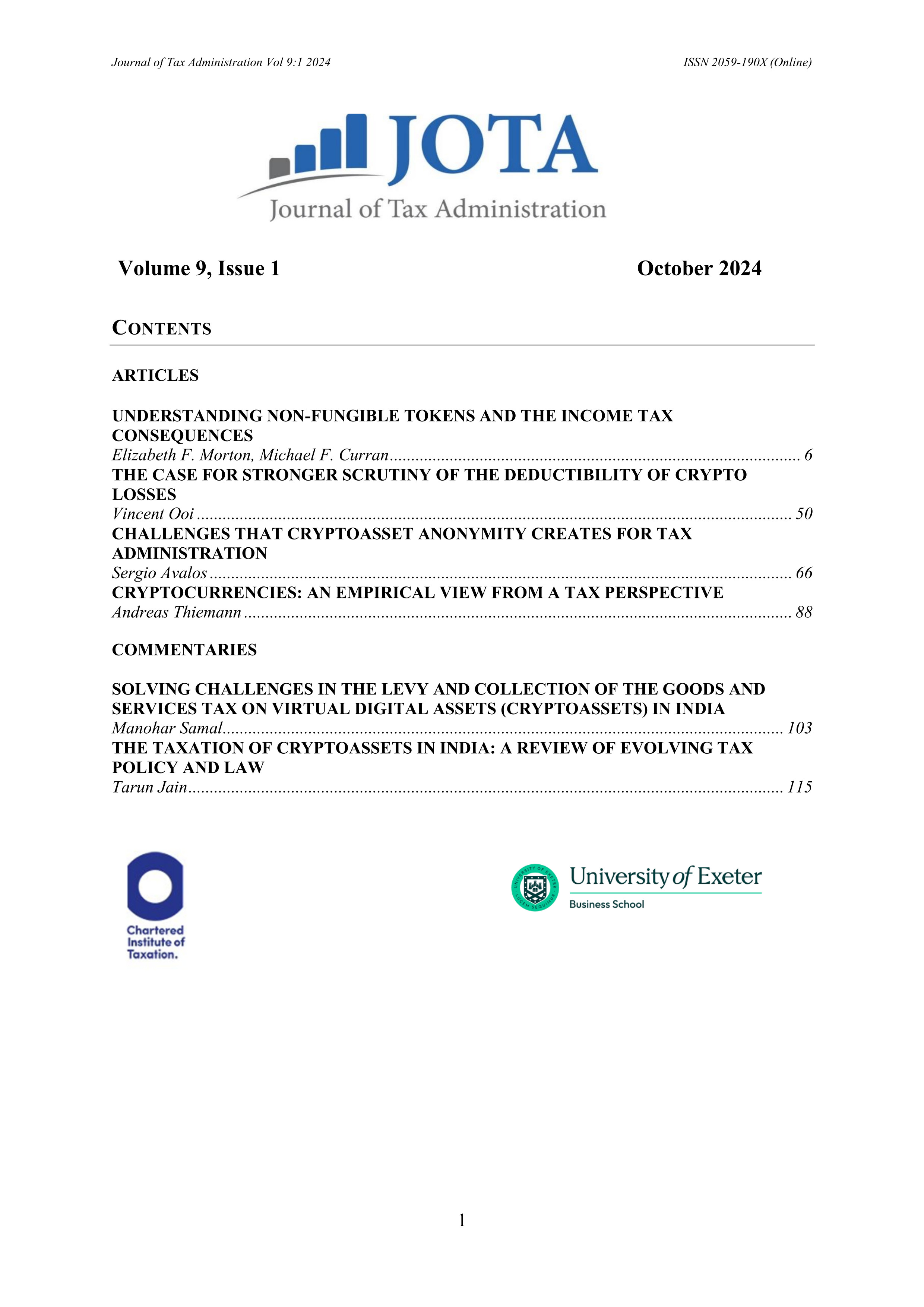Cover, Editorial Board, About the Journal

Downloads
Published
31-10-2024
How to Cite
JOTA. (2024). Cover, Editorial Board, About the Journal. Journal of Tax Administration, 9(1), 1–3. Retrieved from https://jota.website/jota/article/view/162
Issue
Section
Introductory Material
License
Copyright (c) 2024 JOTA

This work is licensed under a Creative Commons Attribution 4.0 International License.
Our open access status means that authors retain the copyright of their work. However, all papers published in JOTA are done so under a Creative Commons Attribution 4.0 International license (CC BY). This means that others can share and/or adapt your work without your permission as long as they follow certain rules, including attributing your work correctly.
You can learn more about this on our Open Access, Licensing, and Copyright Policies page.



